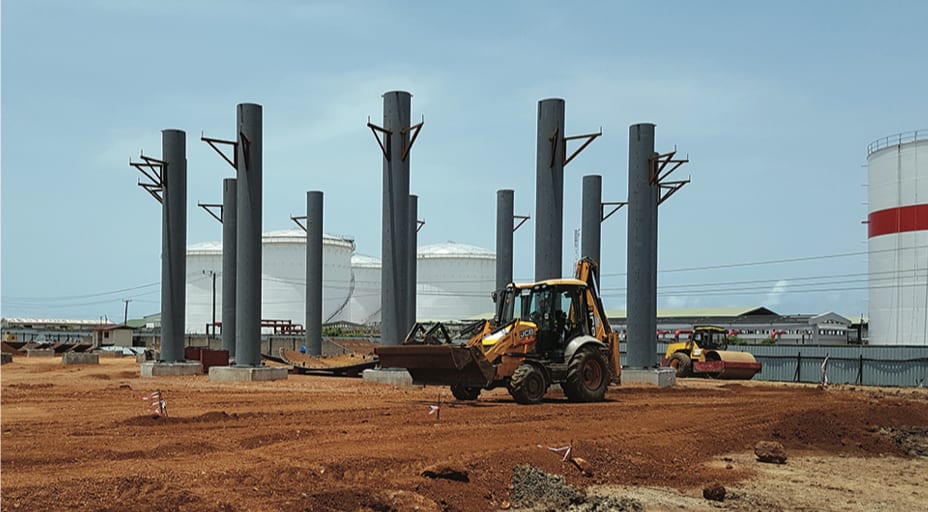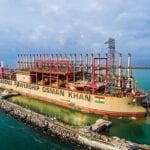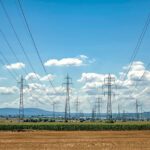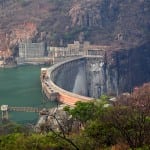Sub-Saharan Africa’s power generation capacity is projected to surge 4% annually through 2040, and its current energy mix—which is today dominated by hydro and coal—will likely be more diversified as interest rises in renewables such as solar and wind, General Electric (GE) said in a white paper surveying market opportunities in the region that it released in May.
The region is characterized by a seeming “over-dependence on governments” to resolve an energy dilemma: “Governments are faced with investment, policy and regulatory framework challenges that oftentimes hinder their ability to fulfill the responsibility of providing affordable and reliable power,” the white paper says. However, with increasingly diverse funding from public and private sources, including innovative partnerships with private investors and independent power producers (IPPs), “the current narrative that two out of three people in the region needs access to electricity is expected to change,” it says. Among major trends the white paper highlights are that IPPs and public-private partnerships (PPP) will account for 35% of the region’s installed capacity, excluding South Africa, by 2020. “The IPP model, now the primary vehicle for investment in the region’s energy sector, is expected to grow in reach and beyond its current concentration,” it suggests.
“Transparent and credible regulatory oversight, dynamic power sector planning and committed and experienced equity partners further enable IPP participation in these economies,” GE noted. To date, Uganda, Kenya, Namibia, Senegal, Ghana, and South Africa have clear policies around private sector participation in their energy economies. In recent months, for example, 14 IPPs in Namibia committed to investing $111.7 million to add 70 MW of capacity to the national grid, reducing the country’s reliance on imports from the Southern Africa Power Pool. And in March 2019, the Development Bank of Southern Africa matched a $100 million fund extended to it by the United Nation’s Green Climate Fund (GCF) to support the development of microgrid projects. The $200 million investment is expected to add 330 MW of new generation capacity.
Africa has the crucial resources it needs to boost power capacity growth, the white paper suggests. Though many countries are eyeing renewables as part of decarbonization and decentralization efforts, “The timescale for development of renewables energy infrastructure means gas has a large window of opportunity to become the preferred fuel source in the short and medium term,” the paper says. Nigeria, Angola, Tanzania, Mozambique, and Senegal, for example, have large enough gas reserves for export to neighboring countries. Nigeria leads proven reserves at 5.3 trillion cubic meters, and Angola, Equatorial Guinea, Nigeria, and Cameroon are key exporters of liquefied natural gas. The prospect of increasing regional trade from countries with gas, from Mozambique to South Africa and Nigeria to Western Africa, is also a growing trend.
Future market prospects, however, will also include increasing orders for solar power, especially for off-grid applications, as costs fall, and business models shift from peer-to-peer lending to the widespread use of mobile money technology. “In Kenya, M-Pesa, a platform that offers retail financial services via mobile phones, has enabled companies that provide rent-to-own solar energy solutions for the off-grid population through access to mobile money payments,” it notes.
Hydropower, which today accounts for more than 50% of generation in countries like Uganda, Namibia, Zambia, Democratic Republic of Congo, Ethiopia, Togo, and Mozambique, will need to invest in storage systems to manage intermittency, especially due to climate events such as drought, and enable flexibility. Geothermal is also poised to see massive growth, from the current 664 MW installed region-wide to 15,000 MW—representing a $40 billion investment opportunity.
Digitization, through the broad spectrum of internet of things (IoT) solutions is also underway on a large scale as governments focus on increasing energy access and reducing transmission losses. “The proliferation of internet-enabled solutions such as smart grids, renewable energy integration, and automated metering are enhancing energy delivery optimization, particularly in South Africa and Kenya, where smart metering is reducing domestic and commercial consumption, increasing revenue collection rates and improving operational efficiency,” it says. However, the paper notes that digital technologies are poised to play a more-pronounced role in helping countries analyze and forecast power demand, provide customer insights, and improve the customer experience.
Yet, sub-Saharan Africa faces myriad challenges. Two factors that could determine the viability of the region’s energy sector are “financial sustainability of utilities and tariff affordability,” it notes. Utilities have historically struggled with operational efficiencies.
The region also depends heavily on power sector subsidies, which hampers the progression of cost-reflective tariffs. “Improving operational efficiencies by reducing combined transmission, distribution and bill collection losses as a percentage of dispatched electricity are key to closing the revenue loss gap. Pre-paid metering systems align electricity payments with income flow and improve the rate of payment to utilities,” GE said.
Another issue that investors grapple with, according to GE, is a “lack of well-structured projects, especially for transmission and distribution, that support attractive rates of return.” If the region improves future project economics through effective power sector reform and the reduction of inefficiencies in the energy value chain, it could attract a wider range of investors, including private offices, sovereign wealth funds, and individuals worldwide. “Ideally, the region aspires to achieve an energy economy that balances investment, affordability, access, and reliability,” the paper says.
Elisee Sezan, CEO for GE’s Gas Power business in sub-Saharan Africa, said in a statement to POWER that GE is working to roll out solutions to “foster collaboration through partnerships with governments, technology providers and the private sector.”
Among success stories cited by GE are a scalable microgrid system in Ethiopia and a smart grid solution in Botswana to help optimize the country’s grid response. GE equipment has also helped add 600 MW of power to Ghana’s grid; plants include the 424-MW Bridge Power project (Figure 3)—which will be the first liquefied petroleum gas-fired power plant in Africa and the largest in the world, and the Atuabo waste-to-power IPP, which will be the first TM2500 plant to use otherwise flared isopentane gas as a fuel source.

GE is also providing equipment to the 350-MW Cenpower IPP—the first licensed IPP project in Ghana—as well as the 200-MW Amandi power plant, a 9E gas turbine plant that is slated to come online this year. In Nigeria, GE says more than 3 GW has been “committed” to meet that country’s power generation ambitions. In Angola, GE is working on the 750-MW Soyo 1 combined cycle power plant, and it has installed 20 trailer-mounted gas turbine units. GE also delivered the Azito power plant, which produces more than a third of Cote D’Ivoire’s power.










